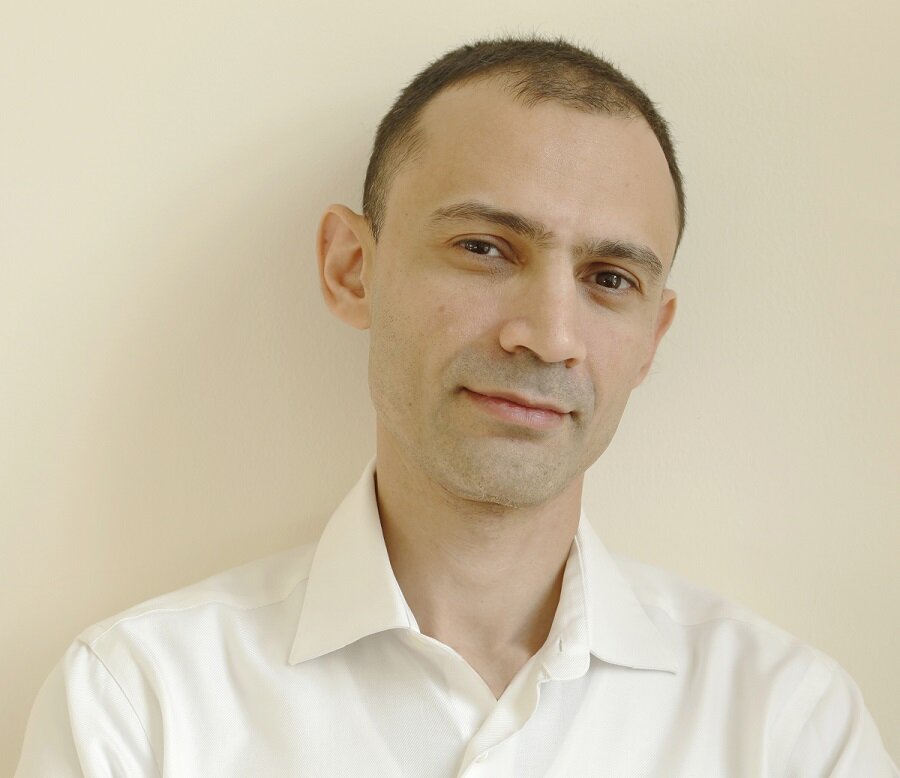The Carnegie Mellon School of Architecture is pleased to welcome Sarosh Anklesaria as the T. David Fitz-Gibbon Professor of Architecture. Anklesaria is an architect, educator, and recently a critic at the Yale School of Architecture. He has also taught architecture at The School of Architecture at Taliesin, Cornell University, The Pratt Institute, Syracuse University, and CEPT University.
Anklesaria is interested in an expansive notion of architectural agency, one that synthesizes architecture’s formal and tectonic capacities with questions of socio-ecological pertinence, across various scales and geographies. This includes an ongoing investigation into the entanglements between planetary food systems, ecological justice, synanthropism, and architecture -- a search for archetypal antidotes to the agro-industrial complex and its attendant architectures. Last year, Anklesaria won the Richard Rogers Fellowship from the Harvard Graduate School of Design and the Taliesin Fellowship from the former School of Architecture at Taliesin to pursue this research. His work on synanthropic food biomes will be published in the forthcoming Venice Biennale of Architecture, How will we live together (2021).
At Carnegie Mellon, he will teach a seminar and an Advanced Synthesis Option Studio, Radical Food: From the Global to the Gut (Spring 2021), that furthers these questions. He will also teach this fall with Dana Cupkova in the 3rd year Core Studio Environmental Form and Feedback. Anklesaria will also speak in the SoA’s Fall 2020 Lecture Series, delivering his talk “Agency and its Affects” on Monday, 16 November 2020.
“We are living through a time of massive change, where we need to see ourselves not just as architects or educators, but as engaged subjects in an interconnected world," Anklesaria said. "One gets an education not only to become an architect, but to develop the critical tools to be a more informed citizen, an agent of change. This in turn transforms both the profession and the discipline.”
He is inspired by the increased activism of students and educators at campuses across the country in response to Black Lives Matter, climate justice, and other intersectional movements.
““The myth that architecture is this autonomous, siloed discipline has been shattered. Architecture can remain relevant only through radical acts of engagement, in and of the world.””
“The myth that architecture is this autonomous, siloed discipline has been shattered,” Anklesaria said. “Architecture can remain relevant only through radical acts of engagement, in and of the world."
"As an architect and educator, I am interested in the embedded relationships between our ecological and social crises. I think this comes from my background growing up and practicing as an architect in India, where one could not parse out distinctions between the natural, the material, and the human,” Anklesaria said. “The human-nature divide has long been outdated and this pandemic has exposed the enmeshed conditions between planetary ecology, biopolitics, and society. We live in a highly entangled world and our education needs to consider the complexities of such entanglements."
Anklesaria is currently co-authoring a book, with Professor Lily Chi at Cornell University, that offers critical appraisals of Le Corbusier's City Museum in Ahmedabad. The book will unpack questions of post-colonialism, conservation of modernist architectures, practices of display, and inclusive publics. A related project, supported by the Art Omi Architecture Residency (2019), proposes a speculative itinerant pavilion that implicates labor, display, and architectural agency through acts of building and unbuilding.
Anklesaria has worked extensively as a practicing architect: with Diller Scofidio + Renfro in New York City on The Shed, a landmark mobile facility for the visual and performing arts; with Herzog & de Meuron in Basel on the Kolkata Museum of Modern Arts; and with Sangath, the office of B.V. Doshi in Ahmedabad. In addition to his independent architecture practice, Studio Sarosh Anklesaria, he also co-founded Anthill Design, a collaborative practice based in India with Riyaz Tayyibji and Roma Pandya.
“My career has taken an interesting course,” Anklesaria said. “I started building in my early 20s and practiced collaboratively for six years in India before doing a master's degree and theorizing.”
Anklesaria continues to practice and teach within the context of South Asia. He is currently an invited instructor at Poché, an interdisciplinary online platform for conversations and speculative design studios related to the Global South. He will also be teaching a seminar on Architecture in an Age of Climate and Capital at the Indus Valley School of Art and Architecture, Karachi.
Anklesaria's writing, design projects, and research have been published in a variety of media including The Architectural Review, Domus, Architect’s Newspaper, and Design Today. He has also juried on the architecture and design grants panel for the NY State Council of the Arts. He holds a diploma in architecture from CEPT University, Ahmedabad, and a post-professional Master of Architecture from Cornell University.

